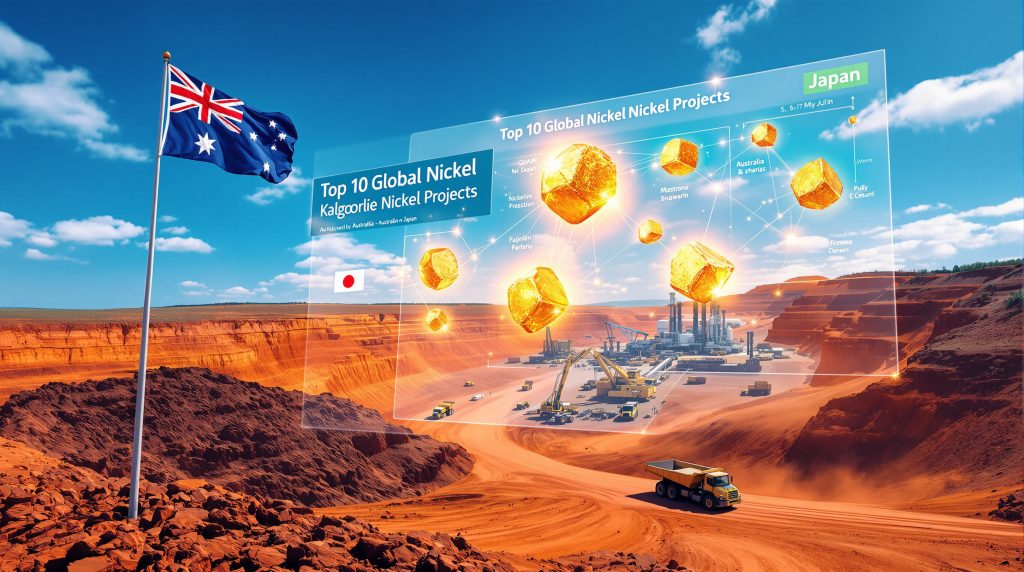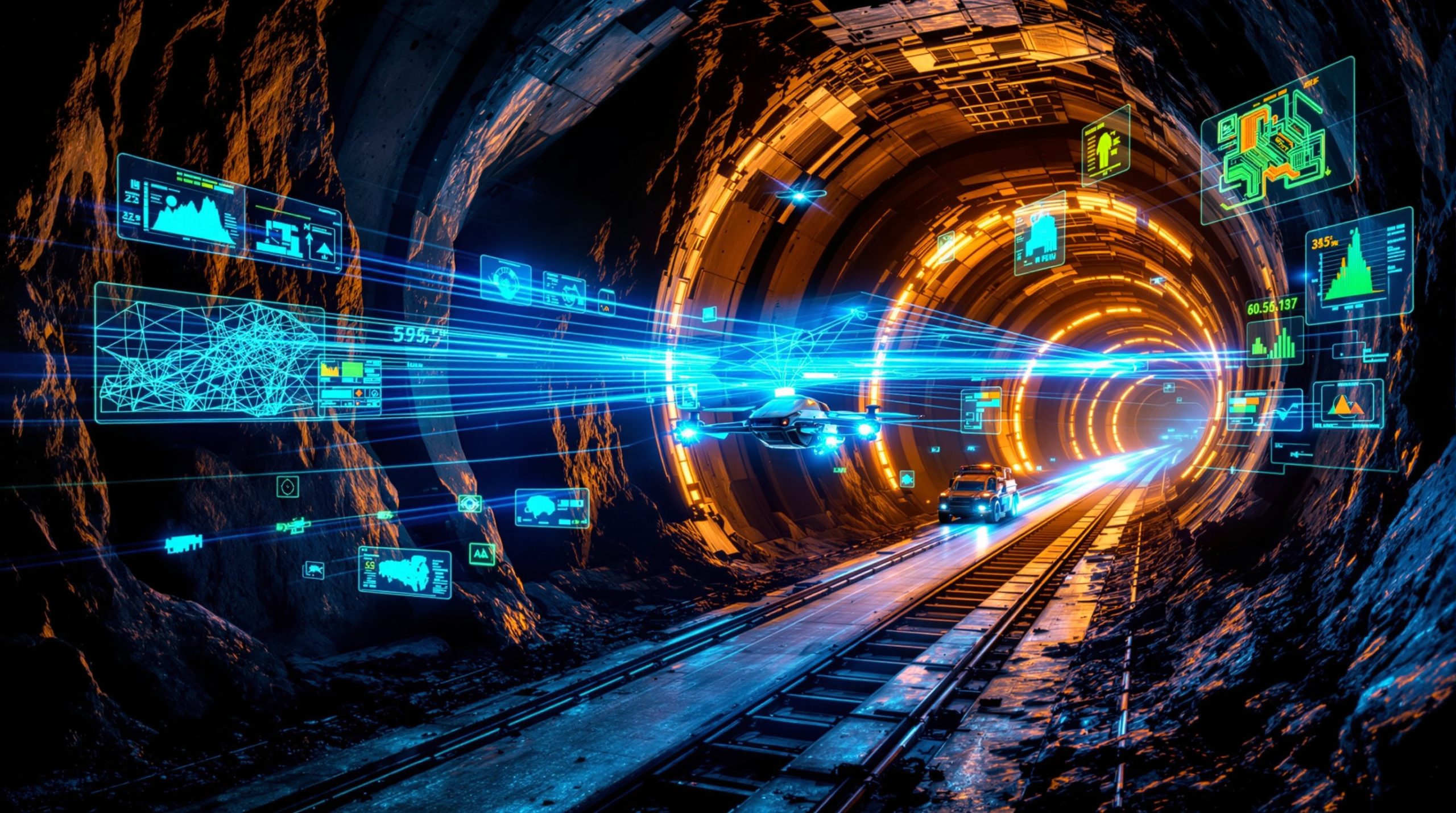The Kalgoorlie nickel project major project status renewal represents a significant milestone in Australia's critical minerals energy transition landscape. Major project status provides federal government recognition for strategically important developments, offering streamlined regulatory pathways and enhanced coordination between government agencies.
This designation grants access to the Major Project Facilitation Agency, which serves as a central coordination point for intergovernmental support. The agency facilitates direct assistance to qualifying projects, expedites approval processes, and ensures vital coordination between federal and state regulatory authorities. For mining developments of national significance, this framework eliminates bureaucratic delays that can otherwise extend project timelines by years.
The three-year renewal extends governmental support through the project's critical development phase, providing continued access to specialised facilitation services. This timing aligns strategically with the project's definitive feasibility study completion and subsequent construction preparation phases, ensuring regulatory support remains available during crucial decision-making periods.
Strategic Importance Behind the Three-Year Extension
The renewal reflects the project's alignment with Australia's national economic priorities, particularly in critical minerals strategy development. Located in Western Australia's Eastern Goldfields region, one of the world's premier mining jurisdictions, the project contributes to regional economic stability while serving broader strategic objectives.
The timing of this renewal coincides with heightened global focus on supply chain security for battery-grade minerals. Australia's position as a stable, reliable supplier of critical minerals becomes increasingly valuable as nations seek alternatives to traditional supply sources. The project's classification as a key critical minerals collaboration between Australia and Japan demonstrates its importance in international resource diplomacy.
Integration with national supply chain security objectives positions the project within Australia's critical minerals reserve development strategy. Furthermore, the government's support through major project status signals confidence in the project's ability to contribute meaningfully to these strategic goals while generating substantial economic benefits for the Eastern Goldfields region.
Scale and Global Resource Classification
The Kalgoorlie nickel project stands as Australia's largest nickel-cobalt resource, representing a globally significant asset in the battery minerals sector. This laterite deposit contains substantial tonnages of both nickel and cobalt, positioning it among the most important undeveloped nickel-cobalt projects worldwide.
| Project Comparison | Location | Resource Type | Strategic Significance |
|---|---|---|---|
| Kalgoorlie Nickel Project | Western Australia | Nickel-Cobalt Laterite | Top tier globally |
| Regional peer projects | Various | Mixed deposit types | Varying strategic importance |
| International comparisons | Multiple jurisdictions | Laterite and sulfide | Geopolitical considerations |
The project's resource classification places it within the upper echelon of global nickel-cobalt developments, with its laterite characteristics offering specific advantages in processing and environmental impact. Laterite deposits typically provide more predictable metallurgical outcomes compared to sulfide deposits, enabling more accurate feasibility assessments and operational planning.
Technical Specifications and Metallurgical Advantages
Laterite deposits like the Kalgoorlie nickel project offer several technical advantages over alternative nickel sources. The consistent mineralogy of laterite deposits enables standardised processing methodologies, reducing operational complexity and improving long-term production predictability.
The chosen extraction approach aligns with modern environmental standards, incorporating sustainability considerations from the project's initial design phase. This proactive approach to environmental management positions the project favourably for future ESG-focused investment and offtake arrangements.
Processing methodology for laterite deposits has advanced significantly in recent years, with improvements in recovery rates and energy efficiency. These technological developments enhance the project's economic viability while reducing its environmental footprint, creating a more attractive investment proposition for international partners.
Joint Venture Structure and Strategic Partnership
The collaboration between Ardea Resources, Sumitomo Metal Mining, and Mitsubishi Corporation creates a unique partnership structure combining Australian resource expertise with Japanese technological capabilities and market access. This joint venture arrangement leverages each partner's strengths while distributing development risks across multiple entities.
Ardea Resources serves as the project operator and primary developer, bringing local knowledge and regulatory expertise to the partnership. The company's understanding of Australian mining regulations and relationships with local stakeholders provides essential foundations for project advancement.
The Japanese partners contribute technological expertise, financial resources, and guaranteed market access for the project's production. This arrangement creates a vertically integrated supply chain extending from Australian production through to Japanese manufacturing facilities, reducing market risks and ensuring stable revenue streams.
Critical Minerals Diplomacy Context
The Australia-Japan partnership reflects broader strategic cooperation in critical minerals development between the two nations. Both countries recognise the importance of developing independent supply chains for battery-grade minerals, reducing dependence on traditional suppliers while ensuring long-term resource security.
Strategic Partnership Insight: This collaboration represents one of the most significant Australia-Japan critical minerals ventures, designed to establish an independent, sustainable nickel-cobalt supply chain serving both nations' industrial requirements while strengthening bilateral economic ties.
Supply chain diversification strategies have become central to resource security planning in both countries. The partnership creates alternative supply routes for the electric vehicle industry while supporting renewable energy storage infrastructure development across the Asia-Pacific region.
Geopolitical implications extend beyond bilateral trade benefits, positioning both nations as leaders in responsible critical minerals development. In addition, the partnership demonstrates how traditional allies can cooperate effectively in securing strategic resources while maintaining high environmental and social standards.
Regulatory Coordination and Development Timeline
The Kalgoorlie nickel project major project status renewal ensures continued access to streamlined regulatory pathways during the project's critical development phases. This coordination becomes particularly valuable as the project advances through environmental permitting, community engagement, and technical optimisation stages.
Federal government support mechanisms include direct liaison services between regulatory agencies, coordinated assessment timelines, and priority processing for key approvals. These services can reduce overall project development timelines by 12-24 months compared to standard regulatory processes.
The three-year renewal period aligns strategically with projected development milestones, providing governmental support through feasibility study completion, final investment decisions, and early construction phases. This timing ensures regulatory coordination remains available during the most critical decision-making periods.
Technical Workstream Analysis
Development priorities focus on several key technical areas requiring detailed analysis and optimisation. Geology and resource modelling advancement continues refining understanding of deposit characteristics and optimal extraction methodologies.
Mining methodology optimisation studies examine various approaches to resource extraction, balancing operational efficiency with environmental impact considerations. These studies evaluate different mining sequences, equipment requirements, and infrastructure needs to optimise overall project economics.
Metallurgical process design refinement focuses on maximising recovery rates while minimising processing costs and environmental impact. Recent advances in laterite processing technology offer opportunities for improved project economics through enhanced efficiency and reduced energy consumption.
Environmental permitting pathway development requires comprehensive assessment of potential impacts and mitigation strategies. The project's proactive approach to environmental management creates opportunities for streamlined approvals while ensuring compliance with evolving regulatory standards.
Economic Development and Investment Attraction
The major project status renewal sends strong signals to international investors about project viability and governmental support. This designation enhances the project's credibility in global capital markets while demonstrating Australia's commitment to critical minerals development.
Investment attraction benefits extend beyond direct project funding to encompass broader regional economic development opportunities. The project's scale and strategic importance create catalytic effects for related infrastructure investments and supply chain development throughout the Eastern Goldfields region.
Market positioning advantages for Ardea Resources include enhanced access to development capital, improved terms for strategic partnerships, and priority consideration for government support programs. These benefits strengthen the company's ability to advance the project through successive development stages.
Regional Economic Impact Potential
Employment generation projections indicate significant direct and indirect job creation throughout the project's development and operational phases. Construction activities alone are expected to support hundreds of positions, with operational employment providing long-term economic stability for local communities.
Local supply chain development opportunities arise from the project's infrastructure and service requirements. Regional businesses can benefit from increased demand for accommodation, transportation, equipment maintenance, and professional services, creating multiplier effects throughout the local economy.
Infrastructure investment catalytic effects include improvements to transportation networks, power supply systems, and communication facilities. These enhancements benefit not only the project but also other mining industry innovation initiatives and communities throughout the Eastern Goldfields region.
National Critical Minerals Strategy Alignment
The project's strategic importance extends beyond economic benefits to encompass national resource security objectives. Nickel and cobalt rank among Australia's priority critical minerals, essential for battery technology supply chains and renewable energy infrastructure development.
Domestic processing capability development goals align with the project's advanced processing plans, contributing to Australia's objective of becoming a global leader in critical minerals value-adding. This approach generates higher economic returns compared to raw material exports while creating additional employment opportunities.
Supply chain resilience building through projects like the Kalgoorlie nickel project major project status renewal reduces global dependence on traditional suppliers while creating alternative supply routes for critical industries. This diversification enhances supply security for electric vehicle manufacturers and renewable energy developers across the Asia-Pacific region.
Export Market Diversification Strategy
Japanese market access through the partnership structure provides guaranteed offtake arrangements, reducing market risks and ensuring stable revenue streams. This arrangement creates a foundation for potential expansion into broader Asia-Pacific markets as production capacity develops.
Long-term offtake agreement possibilities extend beyond the initial Japanese partnerships to encompass other strategic relationships with battery manufacturers, automotive companies, and renewable energy developers. These arrangements provide revenue certainty while supporting battery metals investment efforts.
Premium pricing potential exists for high-ESG production, with environmentally responsible and socially sustainable operations commanding higher prices in increasingly conscious global markets. The project's proactive approach to sustainability positions it favourably for these premium market segments.
Development Challenges and Market Opportunities
Technical development risks remain inherent in any large-scale mining project, particularly those involving advanced processing technologies. Metallurgical processing optimisation requires continued investment in research and development to ensure optimal recovery rates and cost efficiency.
Infrastructure development coordination needs encompass transportation, power supply, water management, and waste handling systems. Successful coordination of these interconnected systems requires careful planning and stakeholder engagement to ensure timely completion and cost control.
Environmental compliance pathway complexities reflect evolving regulatory standards and community expectations. However, proactive engagement with regulators and stakeholders helps identify potential issues early while developing appropriate mitigation strategies.
Market Position Strengthening Opportunities
Growing global demand for battery-grade nickel creates favourable market conditions for new production sources. Electric vehicle adoption rates continue accelerating, driving sustained demand growth for high-quality nickel-cobalt products.
Technology partnership expansion possibilities emerge from the project's strategic importance and technical complexity. Collaboration with technology providers, research institutions, and other mining companies can accelerate development while sharing costs and risks.
Timeline and execution considerations require careful balance between development speed and technical optimisation. The major project status renewal provides additional time for thorough planning while maintaining momentum toward production startup.
Frequently Asked Questions
What does major project status mean for mining developments?
Major project status provides federal government recognition and support for strategically important developments, including streamlined approvals, intergovernmental coordination, and access to specialised facilitation services through the Major Project Facilitation Agency.
How long is the renewed major project status valid?
The renewal extends the designation for three years, providing continued government support throughout the critical development phase from feasibility study completion through construction preparation and early operational planning.
What makes this project globally significant?
The Kalgoorlie nickel project represents Australia's largest nickel-cobalt resource and ranks among the most significant nickel-cobalt developments worldwide, with strategic importance for critical minerals supply chains serving the battery technology and electric vehicle industries.
When will the project begin production?
Production timing depends on completion of remaining feasibility studies, final investment decisions, and construction phases. Consequently, the major project status renewal supports the project through these critical development milestones.
How does the Australia-Japan partnership benefit both countries?
The collaboration creates an independent, sustainable nickel-cobalt supply chain serving both nations' industrial requirements while reducing dependence on traditional suppliers and strengthening bilateral economic cooperation in critical minerals development.
Investment and Development Outlook: The Kalgoorlie nickel project major project status renewal positions this strategic asset for continued advancement through critical development phases. Readers interested in critical minerals developments can explore additional educational content through the Kalgoorlie Nickel Project website and government resources that provide broader context on Australia's mining sector strategic initiatives and the evolving global battery materials landscape.
Looking to Capitalise on Australia's Critical Minerals Boom?
Discovery Alert's proprietary Discovery IQ model delivers instant notifications on significant ASX mineral discoveries, transforming complex mining announcements into actionable investment opportunities for both short-term traders and long-term investors. Explore historic examples of how major mineral discoveries have generated substantial returns, then begin your 30-day free trial to position yourself ahead of the market in Australia's expanding critical minerals sector.




